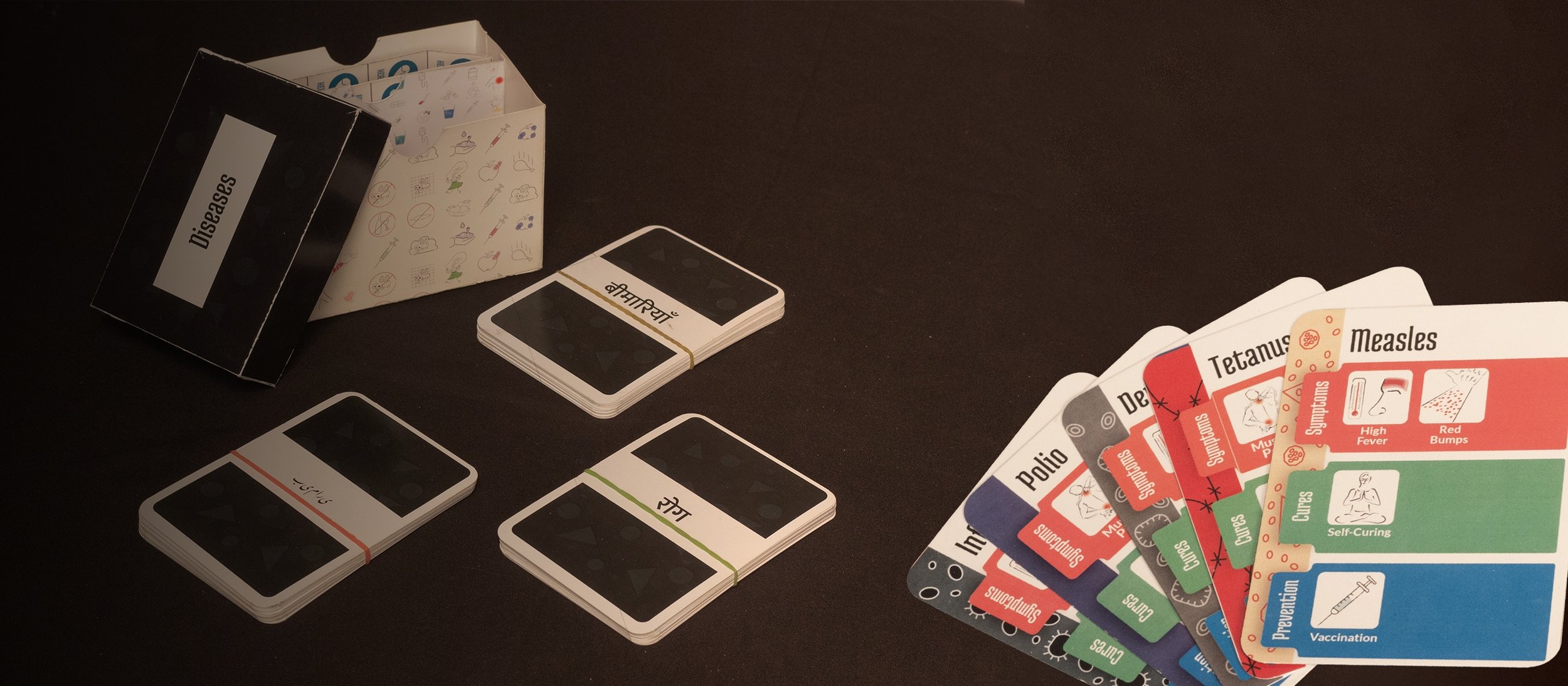
DIseases:
an education based card game .
The game is designed to teach children about the symptoms, prevention, and cures of various illnesses, helping them become more aware of their health and well-being.
Abstract
Introducing “Diseases” an engaging and affordable card game inspired by Uno that educates children about common diseases prevalent in India. Our game aims to teach children about the symptoms, prevention, and cures of various illnesses, helping them become more aware of their health and well-being. We are proud to have collaborated with Navnirmiti, an NGO dedicated to improving the education of low-income families in the Navi-Mumbai and Kalwa Areas.
In this game, each player is dealt seven "disease" cards from the deck. The objective is to get rid of your cards by matching the symptoms, prevention, or cures listed on them with randomly drawn cards. The player who successfully matches the most cards wins. Not only is this game fun and interactive, but it also helps children learn about important health concepts in an engaging way.
Team: Richa | Arinjit | Nimir
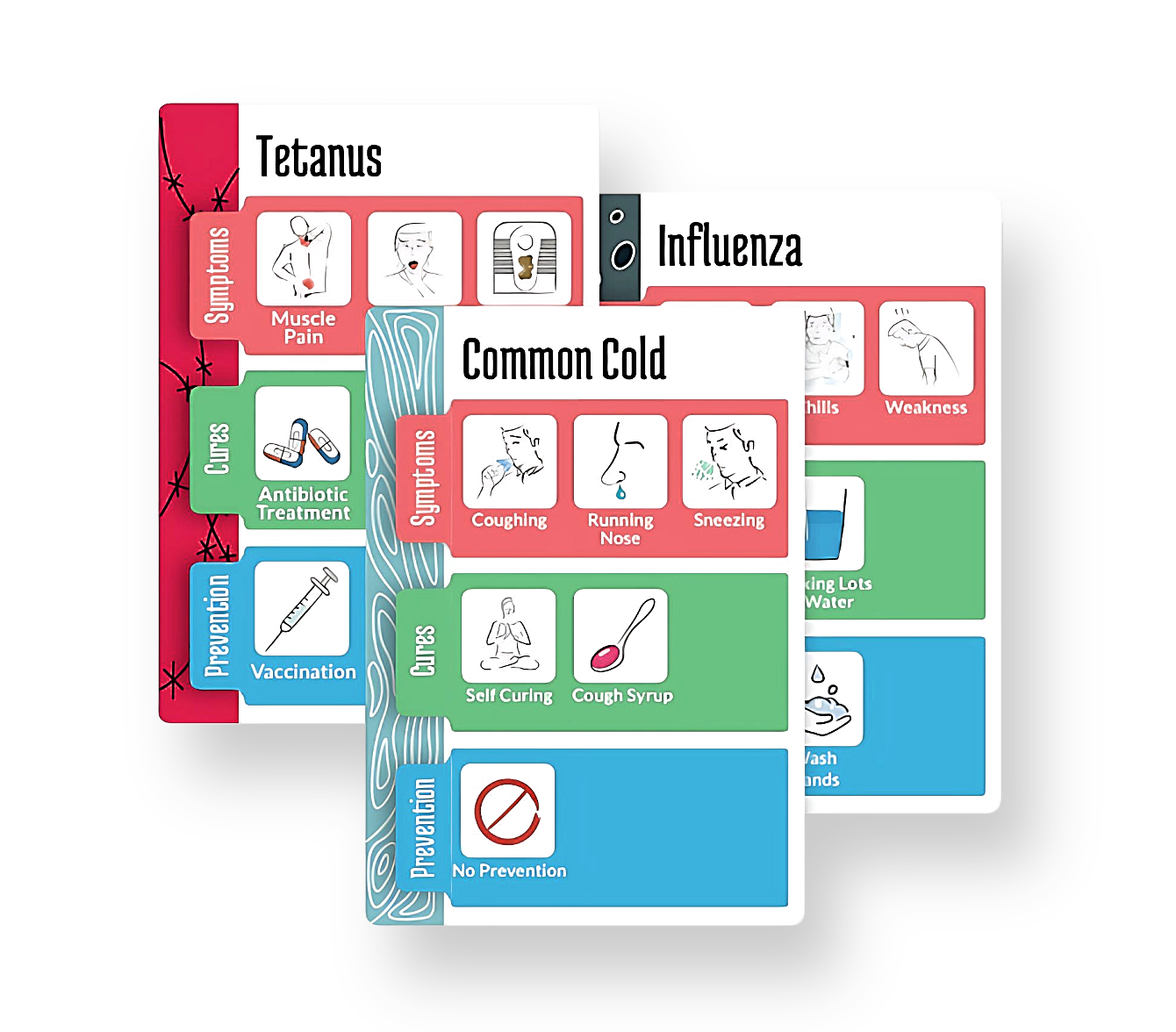
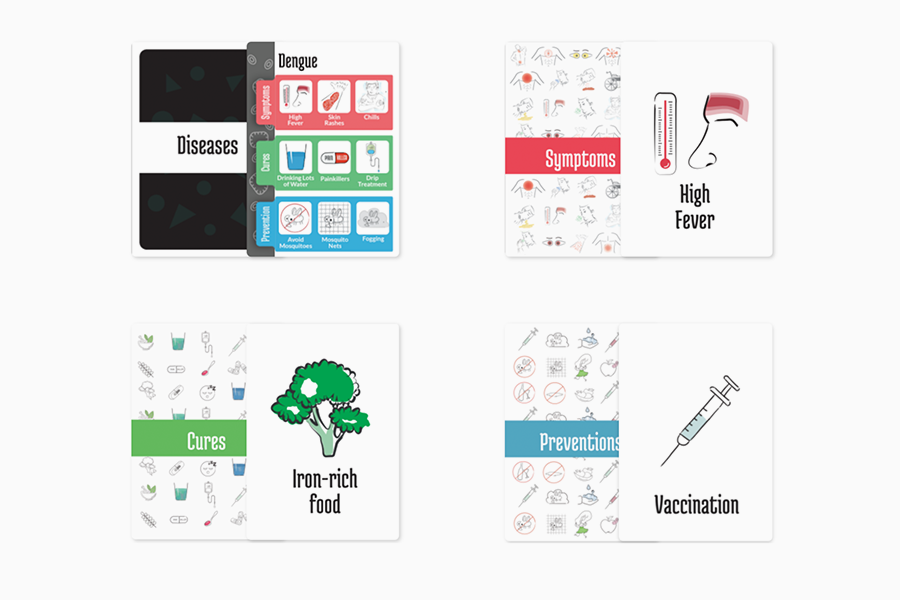
Project Synopsis
Our team was tasked with developing an educational tool or game, and we took a hands-on approach to research. During our visits to schools, we observed that most of the educational games available through Navnirmiti focused primarily on mathematics. Furthermore, the selection of science-based games, particularly those centered around biology, was quite limited.
We also discovered that frequent absenteeism was causing significant issues in the schools we visited, resulting in the cancellation of regular lectures due to low-class attendance. This presented a unique challenge that required a creative solution. We knew that we needed to create a fun and engaging tool that could circumvent this problem, and thus we turned our attention to developing Diseases, the card game.
Through this game, we aim to provide students with an entertaining and interactive way to learn about common diseases and their prevention and cure. By doing so, we hope to mitigate the issue of canceled lectures caused by absenteeism, while also offering an enjoyable educational tool that fills a gap in the market of science-based games.
Our target audience is comprised of primary school students ranging from 3rd to 5th grade. Navnirmiti had always been committed to making education more captivating and interactive, utilizing engaging games and toys as a means of delivering essential concepts.
Target Audience
project duration
6 Weeks
ideation and brainstorming
Prior to embarking on the project, we established several goals that would serve as a guiding framework for our ideation process as we worked towards developing the final solution. These goals were carefully considered to ensure that they aligned with our mission and values, and helped to drive our efforts towards creating an effective and impactful product.
We began by gathering data on prevalent diseases in India, considering factors such as death rates, the propensity to spread, and hygiene vulnerability.
Next, we consulted with Navnirmiti to understand the challenges faced by 3rd to 5th graders. Their insights helped guide our development process and sorting out the information.
We chose an Uno-like card game for its ability to effectively convey information and engage students in a fun way.
TESTING THE IDEAS
To turn our concept into a tangible prototype, we used long post-it notes and incorporated design features that would help users differentiate between cures, symptoms, and preventions. Specifically, we used color-coding on the disease cards and corresponding cards of the same color to indicate the type of information being conveyed.
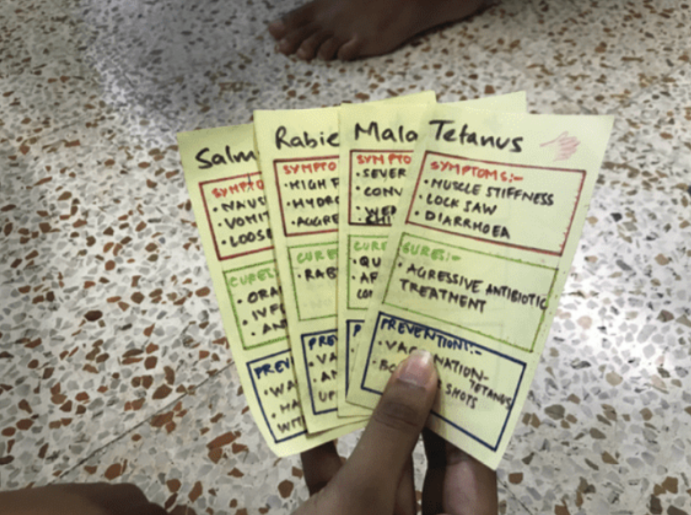
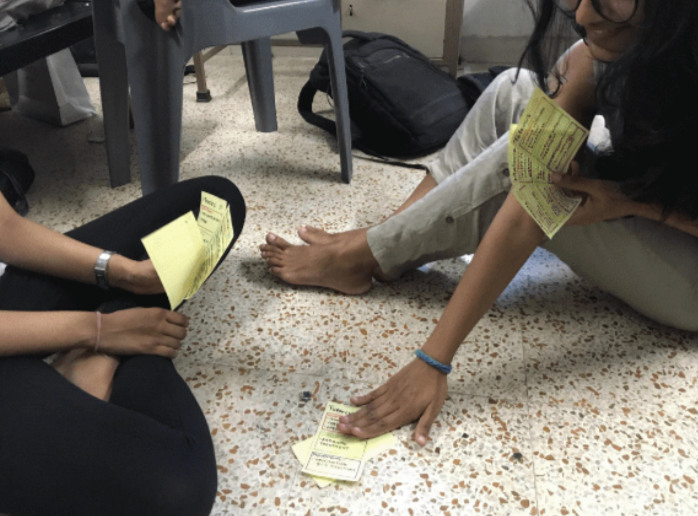
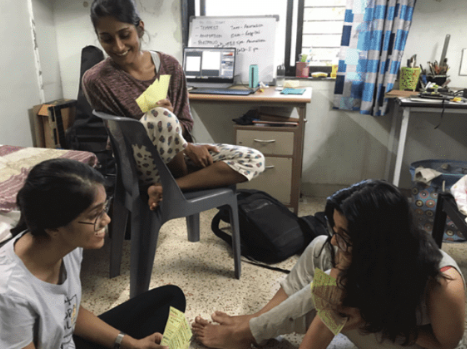
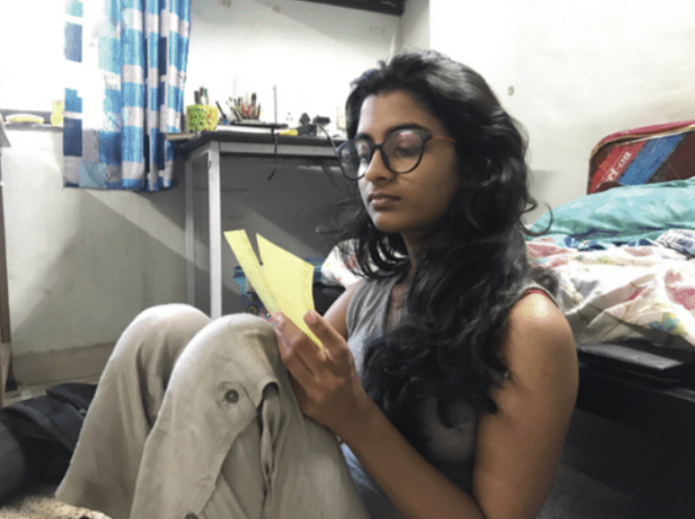
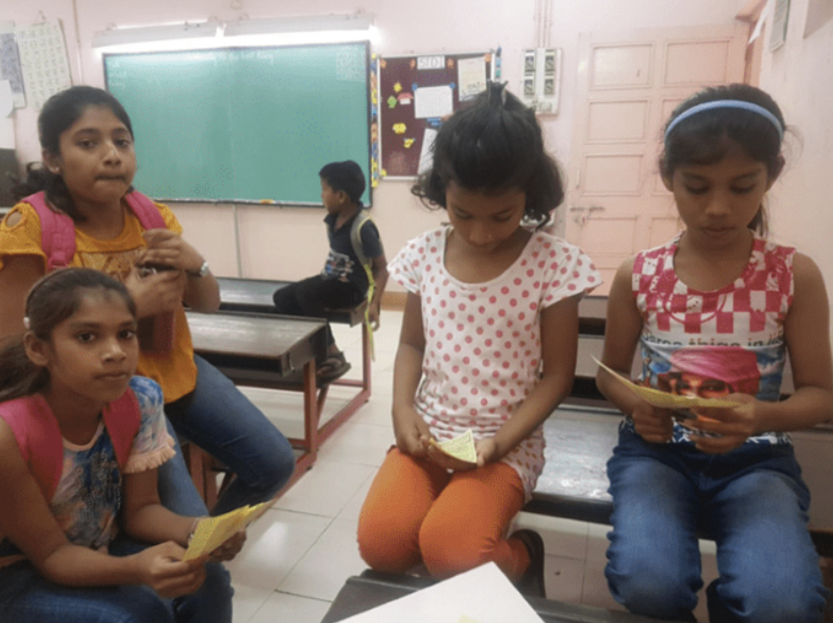
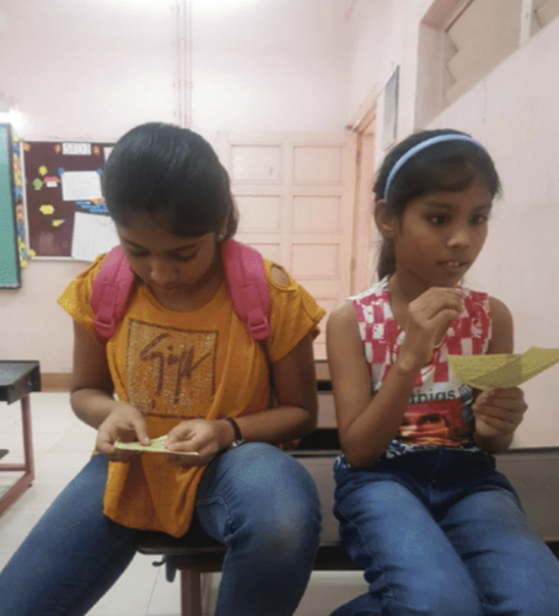
FINAL CONCEPT
With the help of Navnirmiti's team, we conducted rigorous play testing and incorporated multiple rounds of feedback to refine our game mechanics and develop the final concept. After this iterative process, we were able to create a fun and engaging game that effectively teaches children about disease prevention, identification, and treatment. To learn how to play, please refer to the game manual provided below.
KEY DESIGN FEATURE
Monoline Illustration
Monoline Illustration with stroke effects to make sure that illustrations are understated does not get overwhelmed with details and are legible at very small sizes.
Colour as a highlighter
Selective use of colour to highlight key elements in the symptoms, preventions or cures.
Colour as demarcation
Effective use of colours to demarcate between symptoms(red for the alert), cure (green is associated with wellness) and preventions (associated with purity and health) with corresponding use of colour on matching cards.
Abstraction of each disease
Use of coloured bands on the left with abstracted representations of the diseases to lead to easier
associations and assimilations of characteristics. Children held the cards on the right. So the bands
were placed on the left for visibility.
Translations in local languages
Translations of original cards into the local languages of the students, Hindi, Marathi, and Urdu. Initial translations were done with google translate but then corrected where necessary with the help of native speakers.
























